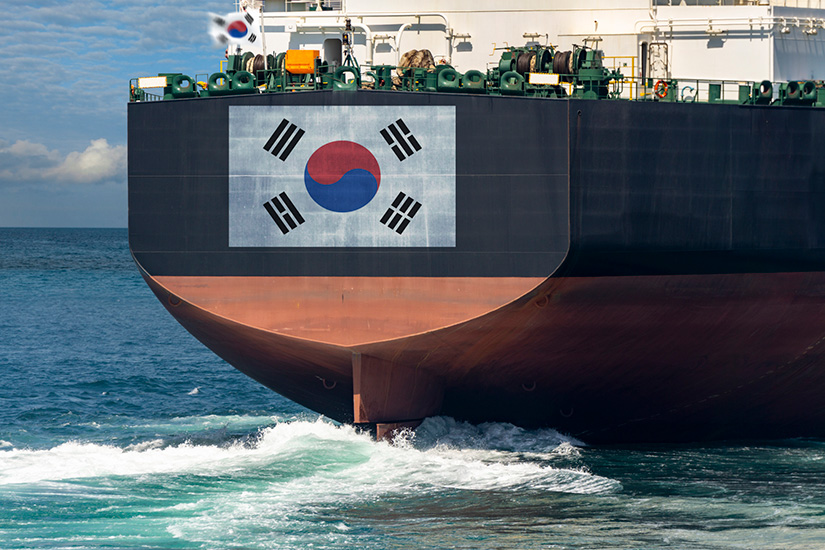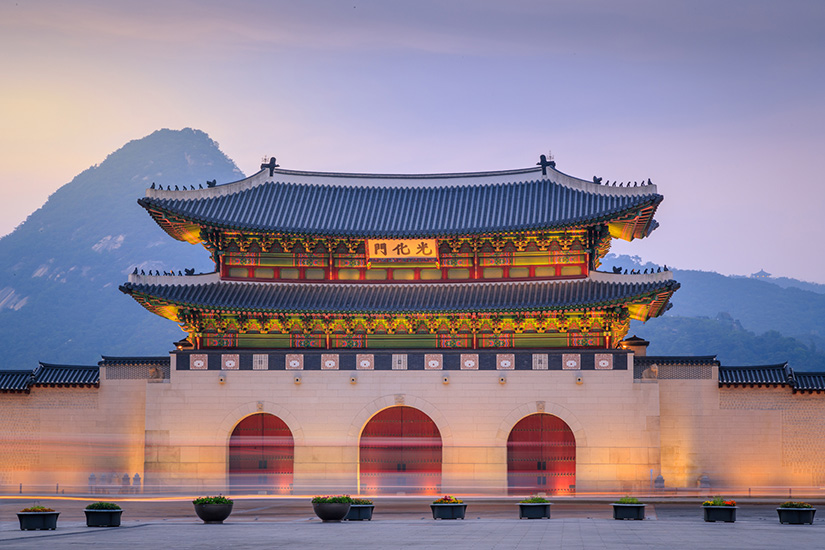Introduction
In recent years, South Korea has emerged as one of the world’s fastest-growing defense exporters, gaining prominence on the global stage. Embracing a vision to elevate the nation to the status of a Global Pivotal State, the Yoon Suk Yeol government has championed 18 policies covering various aspects of foreign affairs, security, trade, technology, and industry.[1] Among these key policies, strengthening defense exports has emerged as one of Yoon’s flagship initiatives. During his New Year Address to the Nation, Yoon proudly announced that South Korea has exceeded an average annual milestone of over $15 billion in defense industry exports and reaffirmed Seoul’s determined goal to position South Korea among the top four defense exporters globally by 2027.[2] Indeed, South Korea rose from 31st place in 2000 to become one of the world’s top 10 defense exporters between 2019 and 2023.[3]
The backdrop of this remarkable growth is a changing global security landscape, characterized by increasing instability and a surge in military expenditures, particularly intensified by the ongoing War in Ukraine following Russia’s invasion. These conditions have paved the way for Seoul’s success in the defense industry, a feat that few countries have accomplished with the same level of prowess as South Korea.
This paper delves into the key achievements and essential external and internal factors that have propelled Seoul into the spotlight as a burgeoning force in the global arms trade. Additionally, it examines the challenges faced by Seoul, recognizing that arms sales go beyond mere commercial transactions to encompass aspects of national strategic outlook and geopolitics.
Global Pivotal States and Defense export
“Global Pivotal State” is the central vision of the Yoon administration, guiding its national objectives, yet it can be somewhat ambiguous and open to interpretations. Yoon clearly stated that “as a global pivotal state grounded in the spirit of freedom and solidarity, the Republic of Korea endeavors to actively address the rapidly evolving security environment.”[4] Essentially, the full phrase “Global Pivotal State Contributing to Freedom, Peace, and Prosperity” encapsulates Seoul’s key aim: ensuring that South Korea undertakes a larger role in international affairs to promote universal values such as “freedom, human rights, and the rule of law,” in close cooperation with like-minded countries.[5] Yoon’s vision of a Global Pivotal State essentially encompasses “values-based diplomacy” by integrating liberal rhetoric into Seoul’s pragmatic foreign policy stance.[6] In this context, defense exports are integral to achieving the Global Pivotal State, playing a crucial role in showcasing tangible achievements like economic interests and enhanced diplomatic relations, while underscoring the country’s commitment to the values it promises to uphold. These aspects are essential for strengthening Yoon’s power base and legitimizing this vision both at home and abroad.
The government has indeed achieved some brag-worthy successes through defense exports. Yoon’s national security strategy celebrates South Korea as “a defense industry powerhouse” with growing defense exports that achieved their highest value in 2022.[7] In 2023, South Korea’s arms exports reached approximately $14 billion, marking a decrease from $17.3 billion in 2022.[8] Despite this decline compared to the previous year, South Korean defense exports in 2023 have been successful in terms of diversification. The country expanded its exports to 12 countries, up from 4 countries previously, and the types of weapons systems exported doubled from 6 to 12 in 2023.[9] South Korea has expanded its diverse customer base, so that it now spans multiple regions from Australia to countries in Southeast Asia, the Middle East and Europe, for selling a variety of items including tanks, howitzers, warplanes, Multiple Rocket Launcher Systems, armored vehicles, and offshore patrol vessels. Furthermore, arms sales play an increasingly significant role in facilitating South Korea’s defense cooperation by encompassing provisions for equipment and parts, training programs, and joint development efforts, extending beyond the sale of weapons.[10]
For 2024, the government has ambitiously set its sights on achieving $20 billion in arms exports. This target not only reflects South Korea’s growing stature in the global defense market but also aligns with its strategic vision of playing a more influential role on the international stage in cooperation with like-minded countries.
Defense exports have evidently played a significant role in showcasing South Korea’s new role as a Global Pivotal State to the international community. South Korea has not directly provided lethal weapons to support Ukraine due to policies that restrict the provision of weapons to any party to a conflict. However, it has exported 155-millimeter shells to the US, supporting American efforts to provide munitions to Ukraine, while approving Poland’s export of Krab howitzers, which incorporate South Korean parts, also to Ukraine. Moreover, South Korea’s recent arms exports to NATO countries have played a role in enhancing the alliance’s military capabilities, at a time when these have been strained by their support for Ukraine.[11] Essentially, South Korea’s arms export indirectly contribute to defending Ukraine and demonstrate its growing role in supporting like-minded countries and their shared values.

Good timing or something else?
Impeccable timing has played a pivotal role in South Korea’s success in defense exports. The increasingly unstable global security landscape has led to unprecedented levels of global defense spending, acting as a catalyst for arms sales worldwide. In 2023, global total defense spending reached a record-high of $2.2 trillion, marking a 9 percent increase from the previous year, and this year’s expenditure is anticipated to surpass that record.[12] Some European nations are facing a shortfall in production capacity to address mounting demands on the eastern frontline and reinforce their own national defense amid the ongoing war in Ukraine. The sanctions imposed on Russia for invading Ukraine have made Russian arms exports challenging. Vietnam, once a significant customer for Russia, witnessed a decrease in Russia’s share of its weapons from 22% to 16% over a period of five years.[13]
In these circumstances, South Korea seized the opportunity. The ongoing threat from North Korea since the Korean War has spurred South Korea to invest significant effort in strengthening its defense industry. Based on close cooperation between the government and businesses, and supported by bipartisan backing, key arms manufacturers like Hanwha Aerospace, Korean Aerospace Industries (KAI), Hyundai Rotem, and LIG Nex1 are now competitive enough to make their presence felt in the global defense market.[14]
South Korea’s technological prowess, mass-production capacity, quick turnaround, competitive pricing, weapon interoperability with NATO, and reliable aftersales maintenance make it an attractive choice for global customers.[15] Furthermore, South Korea skillfully meets customers’ demands by offering local production and joint development, providing generous opportunities for technology transfer. A significant milestone in 2023 was Hanwha Aerospace securing a $2.4 billion contract with Australia to supply 129 Redback infantry fighting vehicles. This deal highlights South Korea's ability to cater to its customers by adapting its K21 into the Australian-specific AS21 Redback IFV and manufacturing it in Australia, thereby benefiting the local economy and national defense industry.[16]
It is also noteworthy that the Yoon administration has provided substantial diplomatic support to facilitate defense exports, aligning with its vision of a Global Pivotal State, while also offering technological, financial, and systemic assistance. Indeed, the Yoon’s national security strategy reflects the government’s commitment to establishing a “government-wide support system” aimed at expanding defense exports, based on the understanding that defense exports are closely intertwined with security, diplomacy, politics and mutual trust between countries.[17]
The government has intensified its efforts to enhance coordination with the US in the defense industry. During the Seoul International Aerospace and Defense Exhibition (ADEX) in last October, the KF-21 fighter jet made its inaugural public demonstration flight alongside major US military aircraft, and a US B-52 bomber conducted a flyover and landed for the first time at a South Korean airbase.[18] These events not only reinforced a deterrence message to Pyongyang but also heightened South Korea’s competitiveness in the defense industry, making it more visible and compelling. oreover, Seoul's potential establishment of a new Reciprocal Defense Procurement (RDP) Agreement with Washington aims to bolster partnerships in defense-sector supply chains.[19] It can be expected that this will thereby facilitate its defense exports by enhancing access to the US, its allies and partners' markets.
Yoon has deftly used his overseas visits to strengthen security partnerships and raise the profile of South Korea’s defense industry, showcasing it not only to the host countries but also to a global audience. The establishment of memorandums for strategic defense cooperation and joint development projects of multi-purpose transport aircraft with the United Arab Emirates (UAE) and the first memorandum for joint defense exports with the UK during Yoon’s visits to these nations, exemplifies this approach. Furthermore, Yoon’s inclusion of arms manufacturers in marketing endeavors during his overseas trips to key arms markets in Europe, Southeast Asia, and the Middle East further underscores Seoul’s proactive effort in this aspect.

Challenges
While the global arms market is expected to expand this year with various unstable factors like the Ukraine conflict, the Israel-Gaza conflict, tensions over the Taiwan Strait, and escalating Iranian proxy activities, South Korea is poised to strengthen its foothold in the global market. There are potential export opportunities to Europe, Southeast Asia, and the Middle East. Additionally, negotiations for a new contract with Poland are currently underway. The parliamentary approval of a bill revising the Export-Import Bank of Korea’s capital limit from 15 trillion won to 25 trillion won ($18.7 billion) will further facilitate South Korea’s defense exports.
However, despite its current success, South Korea’s future in the defense industry may not be entirely promising. South Korea’s defense technology heavily depends on the US for key technologies, as its capacity to develop its own independently is lacking.[20] Also, unforeseen factors may emerge that could potentially undermine South Korea’s defense exports, as seen in the challenges faced by the KF-21 joint development program with Indonesia, where Indonesian engineers leaked confidential data about the aircraft, and overdue payments amounted to nearly 1 trillion won.[21] The EU’s strong intention to bolster defense industry ties within Europe, as outlined in its inaugural defense industrial strategy, may potentially pose challenges for South Korea’s access to the European arms market.[22] Above all, South Korea’s approach to the defense industry tends to lean towards short-term achievements, while lacking a comprehensive long-term strategy. The defense industry serves as a billboard for the nation’s vision and political orientation; intricately interconnected with geopolitics, it transcends mere economic benefits derived from the trade of weapons. In this regard, Seoul’s enthusiastic promotion of defense industry exports faces the challenge of being inconsistent between its messaging and its role as a Global Pivotal State.
Yoon clearly articulated that the defense industry is a “peace industry” dedicated to strengthening countries that “share values and respect international order.”[23] However, the Myanmar ambassador’s involvement in a South Korea arms event, where he was photographed atop a K2 tank in May last year has raised questions about South Korea’s credibility as a key defense exporter committed to safeguarding universal values. Moreover, while not widely criticized, South Korea’s active arms sales to countries like the UAE, Egypt, and Saudi Arabia, which are not shining examples of liberal democracy despite being key US partners, may indicate inconsistencies in South Korea’s message of being a Global Pivotal State.
Additionally, as South Korea expands its presence in the global arms trade, it is inevitable that Seoul will face growing pressure to take on a larger role in certain security matters, realms it has hitherto deliberately chosen not to deepen its involvement in. This will eventually complicate regional security dynamics that Seoul navigates, involving various stakeholders, namely Russia, North Korea and China. While doubling down on efforts to enhance product quality and make systemic improvements through close government-private cooperation is crucial, Seoul should also take the time to refine its narrative and goals as a Global Pivotal State, which it intends to communicate and pursue through defense exports.

(2024/04/12)
Notes
- 1 Office for Government Policy Coordination, Prime Minister’s Secretariat, “Yoonsukyeol jeongbu 120dae gugjeong-gwaje [120 National key policy goals of the Yoon Suk Yeol government]”, p.9. (accessed 2 April 2024).
- 2 Office of the President Republic of Korea, “New Year Address to the Nation by President Yoon Suk Yeol”, 1 January 2024. (accessed 15 March 2024).
- 3 See, SIPRI, “Trends in International Arms Transfers, 2023”, March 2024. (accessed 2 April 2024).
- 4 Office of National Security, Republic of Korea, National Security Strategy, June 2023, Preface. (accessed 15 March 2024).
- 5 Office of National Security, June 2023, pp.12.-13; The government of the Republic of Korea, “Strategy for a free, peaceful, and prosperous Indo-Pacific region”, December 2022, p.12. (accessed 16 March 2024).
- 6 Andrew Yeo, “South Korea as a global pivotal state”, Brookings Institution, 19 December 2023. (accessed 15 March 2024).
- 7 Office of National Security, June 2023, p.84.
- 8 Eun-jung Kim. “S. Korea's arms exports amount to nearly $14 bln in 2023”, Yonhap News Agency, 20 December 2023. (accessed 15 March 2024).
- 9 Ministry of National Defense, Republic of Korea, “Olhae bangsansuchul gyumo, daesang-gug 3bae·mugichegye 2baelo neul-eossda [The scale of defense industry expanded in 2023: tripled in export countries and doubled in weapons systems]”, 21 December 2023. (accessed 16 March 2024).
- 10 Office of the President of the Republic of Korea, “Yun daetonglyeong, Seoul ADEX gaemagsig-e chamseoghae bang-wisan-eob jung-yoseong gangjohago, bangsangieob gwangyeja gyeoglyeo [President Yoon attends the opening ceremony of ADEX in Seoul, emphasizing the importance of the defense industry and encouraging defense industry companies]”, 17 October 2024. (accessed 16 March 2024).
- 11 The Korea Times, “Seoul’s arms exports to Poland help NATO tackle capabilities gap amid Ukraine war: U.S. envoy”, The Korea Times, 14 December 2023. (accessed 2 April 2024).
- 12 IISS, “The Military Balance 2024 spotlights an era of global insecurity”, 13 February 2024. (accessed 16 March 2024).
- 13 David Brennan & Yevgeny Kuklychev, “Russia's Arms Export Industry Is Collapsing”, Newsweek, 12 March 2023.
- 14 Wooyeal Paik, “South Korea’s Emergence as a Defense Industrial Powerhouse”, IFRI Papers ASIE.VISIONS, No. 139, Ifri, February 2024, pp.9-12. (accessed 16 March 2024).
- 15 Ibid, pp.17-18.
- 16 The Australian Trade and Investment Commission, “Hanwha Defense starts construction on new armoured vehicle centre of excellence in Victoria”, 20 April 2022. (accessed 15 March 2024).
- 17 Office of National Security, Republic of Korea, June 2023, pp.84-85.
- 18 Josh Smith, “South Korea to hold largest defence show in bid to boost global sales”, Reuters, 16 October 2023. (accessed 16 March 2024).
- 19 Defense Acquisition Regulations System, Department of Defense, “Negotiation of a Reciprocal Defense Procurement Agreement With the Republic of Korea”, Federal Register, 23 February 2024. (accessed 15 March 2024).
- 20 Paik, February 2024, p.18.
- 21 Hyo-jin Lee, “Indonesia's commitment in KF-21 project faces growing skepticism”, The Korea Times, 17 February 2024. (accessed 17 March 2024).
- 22 European Commission, “First ever defence industrial strategy and a new defence industry programme to enhance Europe's readiness and security”, 5 March 2024. (accessed 2 April 2024).
- 23 Office of the President Republic of Korea, “Yun daetonglyeong “bang-wisan-eob-eun pyeonghwasan-eob”…bang-wisan-eob yugseong-eul tonghae teunteunhan anbowa iljali changchul dongsi dalseong ganeung [President Yoon “The defense industry is a peace industry”… Strong security and job creation can be achieved simultaneously by fostering the defense industry]”, 7 December 2023. (accessed 15 March 2024).

